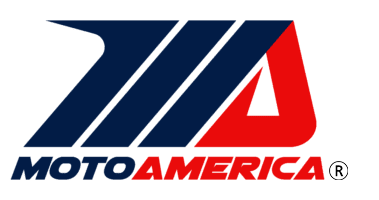
I grew up in a very small hamlet in northern New York. So far north, in fact, that what people called “upstate New York,” we knew as the “Southern Tier.”
Winters are long in the North Country, and if we weren’t riding snowmobiles, we were playing “pond hockey.” Just a bunch of kids on a frozen farm pond or flooded creek that froze over. All of us had hockey sticks, but only some of us had skates. And even fewer of us actually knew how to skate. I was one of the actual skaters, so I had an obvious advantage. While my older brother would try to beat me to the puck by shuffling along in his snowmobile boots, I could easily skate past him, put the puck on my stick, and head towards the goal, one of the skater’s unneeded pair of boots forming the “goalposts.” The goalie was always one of the non-skaters, and it was pretty easy to deke him in his boots and score. I got to the point where I thought I was a pretty good hockey player.
In college, my Division III school had an intramural hockey league. So, in the winter of my freshman year, I decided to show up at the rink. Hockey equipment wasn’t required for intramural hockey other than a stick, some skates, and a helmet. Good thing because the only hockey “equipment” I ever owned was a stick and some skates, and I had to borrow a helmet from another guy on my hall in the dorm.
About two seconds after stepping skates on ice, I knew I was in over my head. Pretty much everyone was decked out in proper hockey equipment. Since I grew up about 15 miles from the Canadian border and my college was only about 30 miles from Canada, quite a few of the players were from Ontario and Quebec. And those who weren’t, were from Long Island (“downstate New York” as we called it) where ice hockey in the winter gives way to roller hockey in the summer.
I was clearly out of my league, mostly because I was never in a league. But I stuck it out for that first practice session, and I realized something. I was never a better hockey player than I was on that day. Oh, I was terrible, don’t get me wrong. Way worse than anyone else on the ice that day, but it was the best I had ever played because it was, by far, the stiffest competition I’d ever played against. That was the first and last time I ever played organized hockey. But I learned something that day:
To improve your competitive skills, play up.
Seek the competition of better players to help you raise your skill level.

MotoAmerica racer Kayla Yaakov, at just 15 years old, already knows how important it is to “play up.” A few weeks ago, as I watched her rail around Jennings GP aboard her Yamaha YZF-R6, I stood next to her father Dave, who was timing her laps at trackside. She was on hard tires and was doing “16s,” which is very fast for a Supersport rider at that track.
After the session, and while her dad was putting softer-compound tires on the bike, I asked Yaakov if her Yamaha YZF-R7–the one on which she will make both her Daytona and REV’IT! Twins Cup Championship debuts next month–felt slow by comparison to her R6 training bike. “Not slow,” she said. “But riding the R6 definitely helps me ride the R7 to its full potential.” Incidentally, after she went out on the softer tires, she brought her lap times down into the 15s. Ask anyone who has raced or done track days at Jennings GP, and they will tell you that, to do lap times in the 15s at that track is absolutely hauling the mail.
This week, Yaakov made the long trip from her home in Gettysburg, Pennsylvania, out to California where she joined her MP13 Racing team owner Melissa Paris and crew at Buttonwillow Raceway Park. It is still early days for her aboard the team’s Yamaha R7, but on day one, she turned a fastest lap time of 1:50.922. On the second day of the two-day test, she improved with a fastest lap of 1:49.718. And she was sharing the track with two-time MotoAmerica Medallia Superbike Champion Jake Gagne, as well as multi-time Superbike race winners Cam Petersen and Mathew Scholtz.
On day one, Petersen tested his Attack Performance Yamaha R6, the same bike on which he finished as runner-up in last year’s Daytona 200. He will have another go at the 200 next month with hopes of improving one finishing position higher.
Petersen did a fastest lap of 1:46.389 on his R6 compared with Yaakov’s fastest lap of 1:49.718 on her R7. She was less than three-and-a half seconds off Petersen’s Supersport pace. On a REV’IT! Twins Cup bike.
“It was a great two days of testing so far on my MP13 Racing Yamaha R7,” Yaakov said. “The bike is feeling amazing, and the team is working together really well. I’ve worked super-hard to prepare for the season, and I know that the team is working their butts off, so it’s nice to show them that their work is paying off. Our times were very good, and I’m excited to keep learning and enjoying this new bike. I’m more than excited to be racing in less than a month, and I hope to put in a good result for myself and the team.”
Keep on playing up, Kayla.
For the full 2023 MotoAmerica schedule and to purchase tickets for MotoAmerica events, click HERE
For information on how to watch the MotoAmerica series, click HERE








